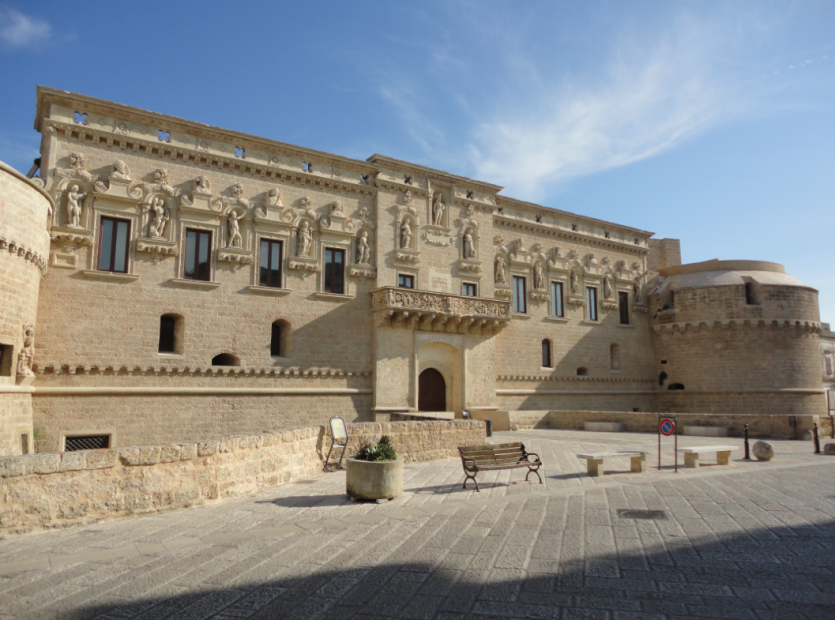You’ve probably never heard of the small town of Corigliano d’Otranto located near the town of Lecce in the Salento sub-region of Puglia. I know I never had and it’s another, among so many, appealing gems easily overlooked by travelers.
Grecia Salentina
Corigliano d’Otranto is one of 11 towns included in the Grecia Salentina (Italian for Salentinian Greek-speaking land). This area is inhabited by the Griko people, an ethnic Greek minority who still speak
Griko, a variation of Greek.
The Union of the Towns of Grecìa Salentina (Unione dei Comuni della Grecìa Salentina) was founded by the Griko population in 1966. Its purpose was to promote the knowledge of Griko and preserve its culture, by organizing research at the university, teaching the language at schools and publishing books and poetry in the endangered dialect.
Castello De’Monti
A town of less than less than 6,000 inhabitants, Corigliano’s main square is dominated by the Castello De’Monti. Today considered one of the most important examples of 16th century feudal and military architecture in the region, the original fortress dates from about the mid-13th century. As a fortress, it was the base of a garrison and well-equipped for defense against the constant threat from attacks by the Turks, the most infamous being in 1485 in nearby Otranto.
The Montibus family came from France after acquiring the castle in a feud in 1465. Nicola Antonio initiated expansion and restructuring by first building up and repairing the walls and bulwarks. His son continued the work and added the sixteen towers.
It was handed down to Giovan Battista who became the first marquis of Corigliano. Between 1514 and 1519 he oversaw continued expansion adding the moat, stable, barracks and the four large towers on the four corners. Aligned with the four corners of a compass, the circular towers were more effective in reducing the impact of cannon shots and still display the loopholes and embrasures for cannons.
Each circular tower is named after a saint and, as a sign of devotion and asking for protection, the towers are decorated with bas-reliefs of their images: San Michele Archangelo (St. Michael the Archangel), San Antonio Abbate (St. Anthony the Abbot), San Giorgio (St. George) and San Giovanni Battista (St. John the Baptist).
In 1649 the castle became the property of Luigi Trani who converted it into a magnificent palace. It was Francesco Trani (duke of Cortigliano 1661) who then added the extravagant Lecce Baroque façade. The duke is featured in the center and is flanked by the figures of Charity and Justice.
Today Corigliano d’Otranto is an appealing and tranquil town with inviting side streets, piazzas and a very friendly cat!





























